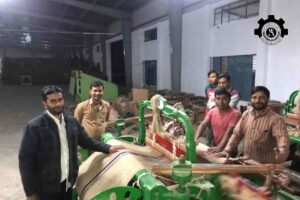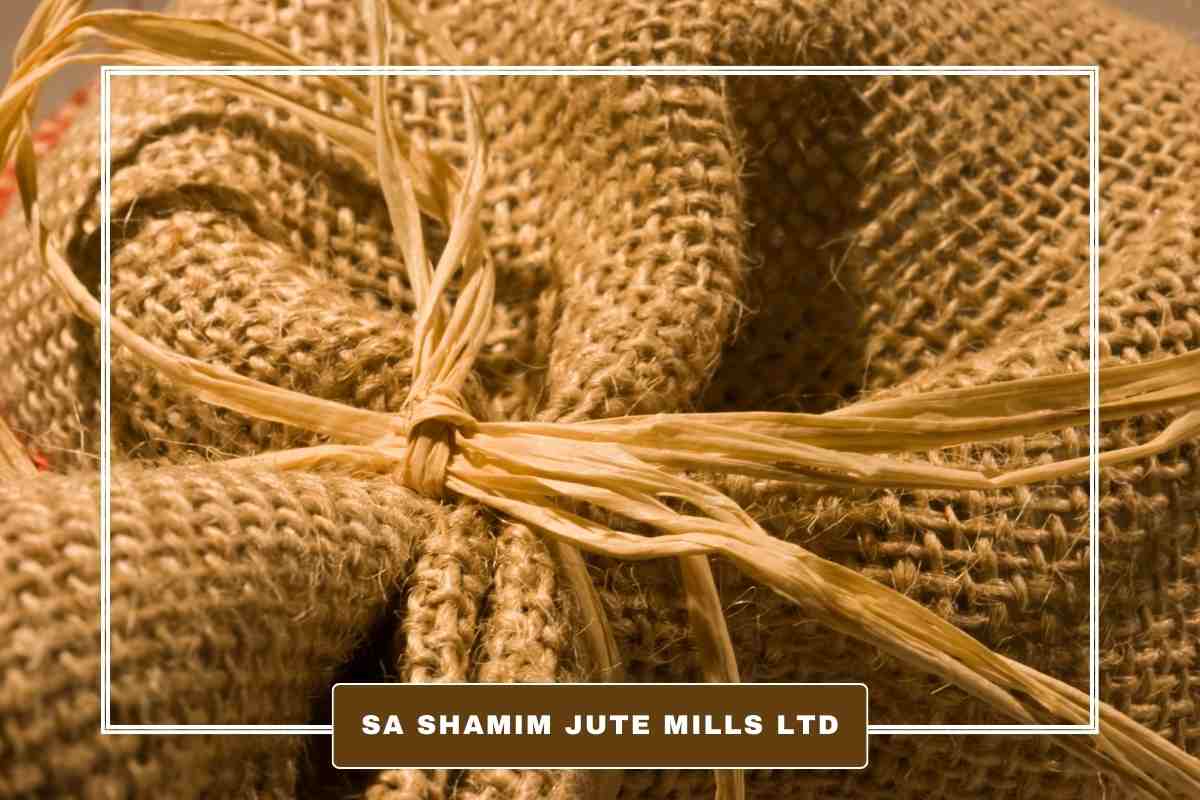Welcome to our exploration of the ‘Golden Fiber’—jute—and its profound sustainable impact. In this blog post, we delve into the eco-friendly promise of jute and how SA SHAMIM JUTE MILLS LTD plays a vital role in this green revolution
Unveiling the Sustainable Impact of the ‘Golden Fiber’ Jute
Jute, known as the “golden fiber,” has established itself as one of the most cherished and eco-conscious natural fibers globally. With a sheen reminiscent of spun gold, it has transformed the textile industry and various other sectors.
Rooted in Nature
Jute’s origins lie in the bark of the white jute plant, scientifically known as Corchorus capsularis, with tossa jute (C. olitorius) contributing to a lesser extent. Cultivating this annual crop is a testament to nature’s brilliance, taking approximately 120 days to reach maturity, typically from April/May to July/August. What sets jute apart is its ability to thrive in tropical lowland areas with humidity ranging from 60% to 90%. It’s a resilient rain-fed crop, demanding minimal fertilizer or pesticides for its cultivation. With a yield of approximately 2 tonnes of dry jute fiber per hectare, it ranks second only to cotton in terms of production volume and the diverse applications of vegetable fibers
The Glistening Strands
Jute’s fibers are nature’s masterpiece, boasting extraordinary characteristics. These long, soft, and lustrous strands extend from 1 to 4 meters in length, with a diameter ranging from 17 to 20 microns. The primary constituents of these fibers are cellulose (a key component of plant fibers) and lignin (commonly found in wood fibers).
The extraction of jute fibers can be accomplished through biological or chemical retting processes. However, in a world increasingly conscious of environmental impact, biological retting methods are the preferred choice. These methods, which include stacking, steeping, and ribbon processes, bundle jute stems, soak them in water, and facilitate the gentle separation of fibers from the stem. It’s a delicate process that pays homage to nature’s elegance.
Eco-Champion
Jute doesn’t just shine in aesthetics; it’s a champion of sustainability. What makes it truly exceptional is its 100% biodegradability and recyclability, making it the ultimate eco-conscious choice. A single hectare of jute plants acts as a powerful carbon sink, absorbing approximately 15 tonnes of carbon dioxide and releasing a staggering 11 tonnes of oxygen. In a world grappling with environmental issues, this is nature’s gift to us.
Furthermore, jute’s contribution doesn’t stop at its fiber; it extends to the soil. When cultivated in crop rotations, it enriches the fertility of the soil for the next crop, embodying the principles of sustainable agriculture. Even when it’s time to bid adieu to jute, it bows out gracefully, leaving no toxic gases in its wake when burnt. It’s an example of a natural material that respects the circle of life.
Versatile Wonders
Jute isn’t a one-trick pony. It’s a versatile fiber with a rich history that spans centuries. During the Industrial Revolution, jute yarn boldly replaced flax and hemp in the production of sackcloth, a trend that continues today.
Jute’s Triumph in Textiles
One of the major applications of jute fibers is in textiles. The strength of jute fibers, combined with their low extensibility, enhances the breathability of fabrics. This has led to the incorporation of jute fibers in curtains, chair coverings, carpets, and area rugs. What’s more, jute plays well with others. It can be seamlessly blended with both synthetic and natural fibers. The finest threads of jute can be separated and spun into imitation silk, showcasing its adaptability and versatility. Additionally, by treating jute with caustic soda, its crimp, softness, pliability, and appearance are improved, making it a natural choice to blend with wool.
Beyond Packaging
Jute’s impact isn’t confined to textiles; it’s a significant player in the world of packaging. Widely used in sacking for agricultural goods, it’s increasingly replacing wood in pulp and paper production. It’s a sustainable alternative that doesn’t compromise on strength or durability.
By-Products of Eco-Excellence
The journey of jute doesn’t end with textiles and packaging. This golden fiber ventures into cosmetics, medicine, paints, and an array of other products. Jute sticks, often overlooked, serve as an efficient fuel and fencing material in rural areas of jute-producing countries. In doing so, they provide a sustainable substitute for traditional wood and bamboo, supporting the production of particle boards, pulp, and paper
SA SHAMIM JUTE MILLS LTD and the Sustainable Impact of Golden Fiber Jute
In the world of jute, SA SHAMIM JUTE MILLS LTD stands out as a leading player. Commitment to quality and sustainability is a testament to the potential of jute as a remarkable eco-friendly resource.
Quality Jute Bags, Yarn & Twine Tailored to Your Needs
SA SHAMIM JUTE MILLS LTD takes pride in offering a wide range of jute products, including high-quality jute bags, yarn, and twine. Their dedication to delivering products tailored to your specific needs is a reflection of their commitment to customer satisfaction. SA SHAMIM JUTE MILLS LTD ensures that clients have a seamless experience in procuring quality jute-based solutions.

A Range of Jute Products
Their product range is diverse, encompassing jute yarn, jute rope, jute hessian bags, and jute food-grade bags. This extensive offering caters to a wide spectrum of requirements, from eco-conscious consumers to businesses looking for sustainable packaging solutions.
In a world where sustainability is paramount, SA SHAMIM JUTE MILLS LTD understands the importance of offering eco-friendly alternatives without compromising on quality or performance.
The Sustainable Future of Jute
As the demand for natural fiber blends continues to grow, so does the significance of jute in the textile industry. Its role has expanded to encompass high-value textiles for furnishings and composites, particularly as a sustainable alternative to wood fibers.
Jute is more than just a fiber; it’s a sustainable solution that respects the environment and supports local economies. As more industries and individuals recognize the significance of sustainability, jute’s future is brighter than ever.
Jute Developments
Numerous projects are underway to enhance the capacity of jute producers and support industry diversification. These initiatives, spearheaded by organizations like the Common Fund for Commodities (CFC), are crucial in promoting innovation and sustainability in the jute industry.
For instance, projects like “Jute Reinforced Polyolefins for Industrial Applications” are focused on material optimization and upscaling processes to replace traditional materials with sustainable jute solutions. These projects create new market niches for jute fiber and open doors to innovative, eco-conscious applications.
Additionally, projects aimed at improving the efficiency of production for various jute uses are integral to the industry’s growth. These endeavors bolster jute’s position on international markets and raise awareness of its incredible potential.
Golden Fiber Jute and Its Eco-Friendly Promise
Jute, often celebrated as the “golden fiber,” continues to shine brightly on the global stage. Its sustainable impact, diverse applications, and eco-friendly attributes make it a fiber of promise in a world that’s increasingly conscious of the environment. With leading players like SA SHAMIM JUTE MILLS LTD committed to quality and sustainability, the future of jute looks golden, indeed. Embracing jute is more than a choice; it’s a step towards a greener and more sustainable future.



